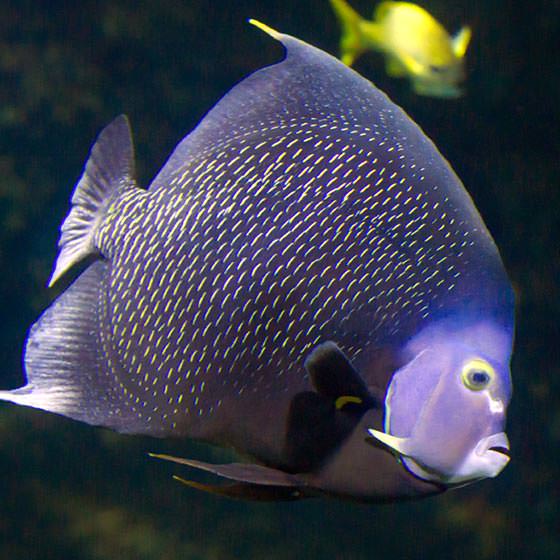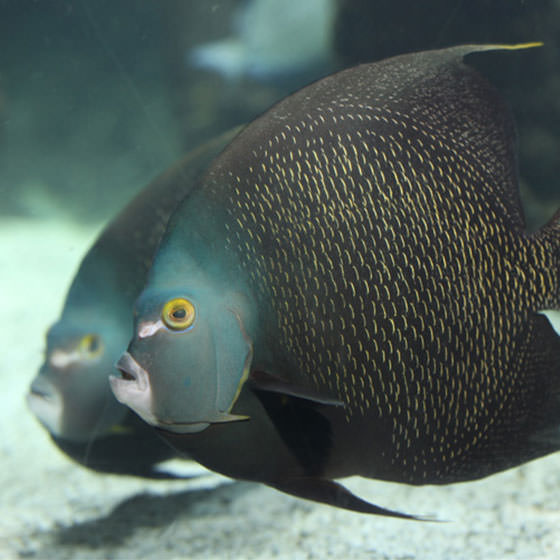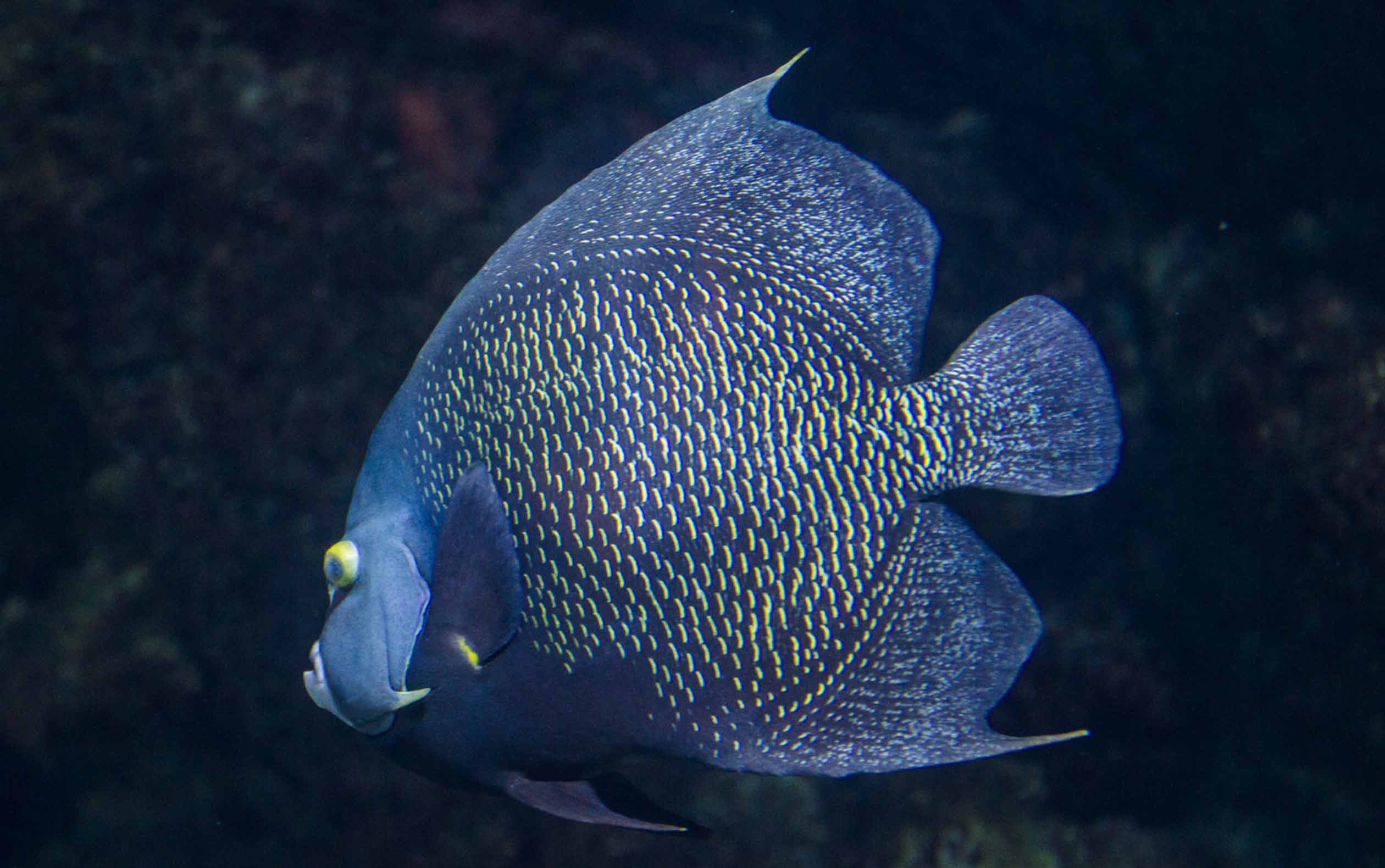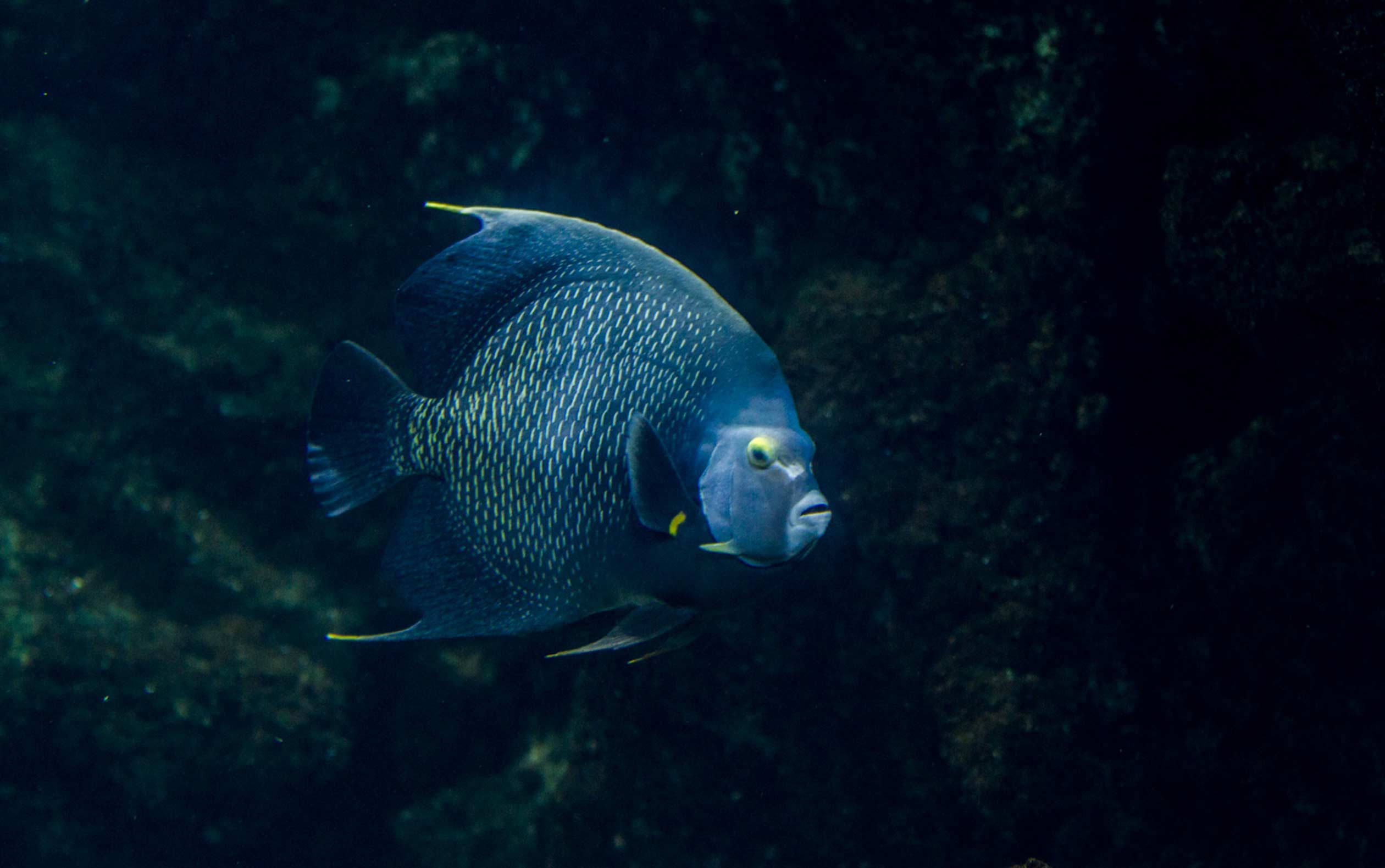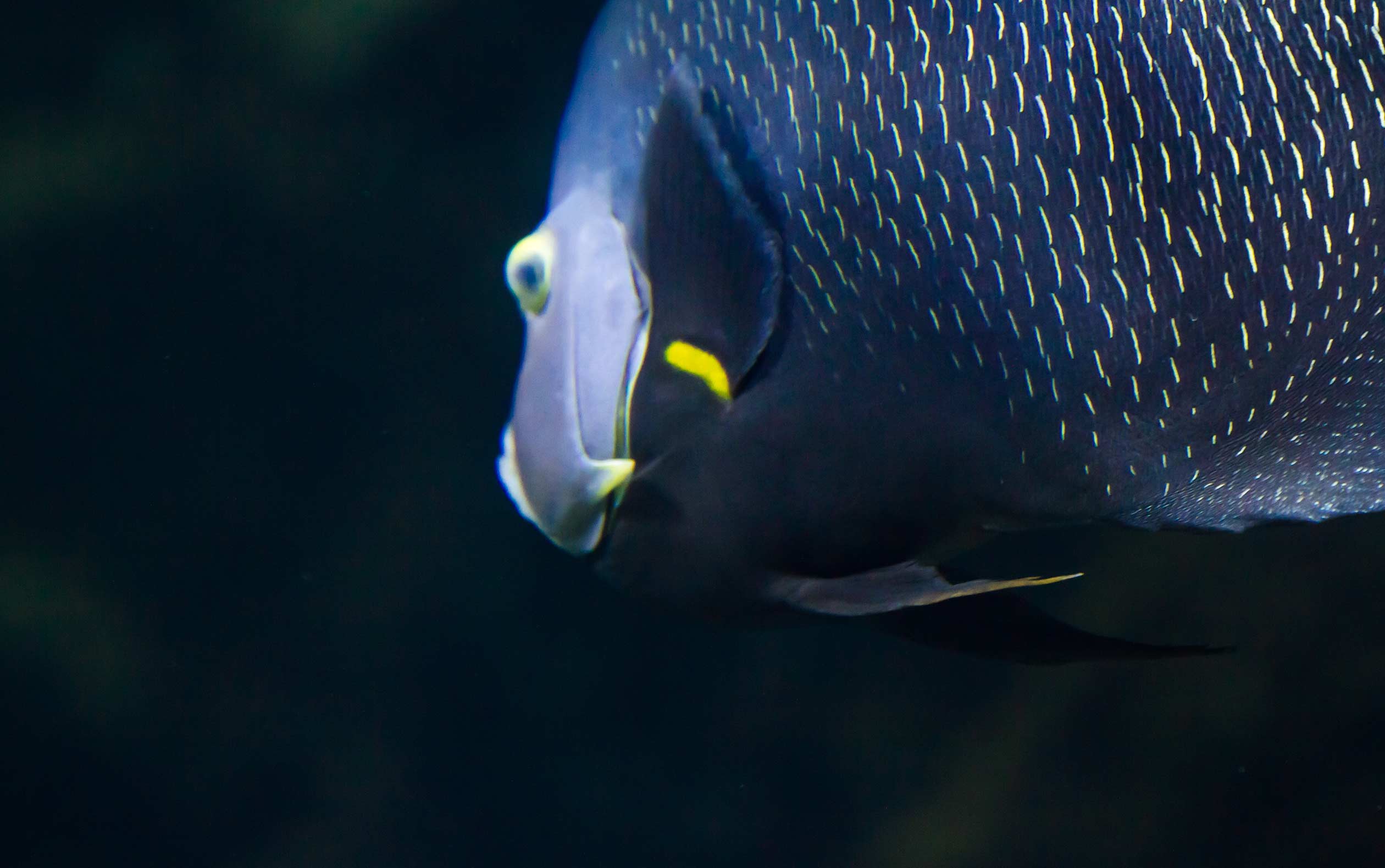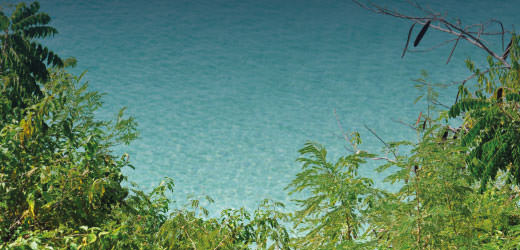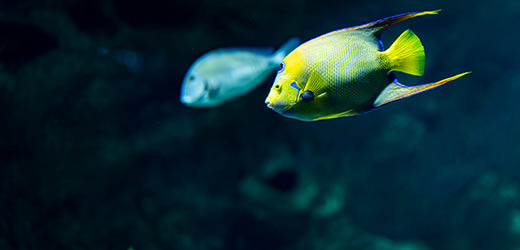Biology
At the base of their opercle, all angelfish have a strong spine that points backward and becomes a fearsome weapon when raised.
The French angelfish swims among the coral and along rocky beds between 5 and 25 m below the surface. The adults’ colouring is fairly dark, whereas the young have yellow bands across their bodies that fade with age.
Often found in couples, they take ownership of a territory that they fiercely defend against their fellow angelfish. They express their aggression through threatening movements accompanied by sounds. They thrive in shallow zones, on reefs and in sandy areas. This omnivorous species feeds on algae, sponges and coral. Its young also play the role of cleaner, ridding other fish of their parasites.
